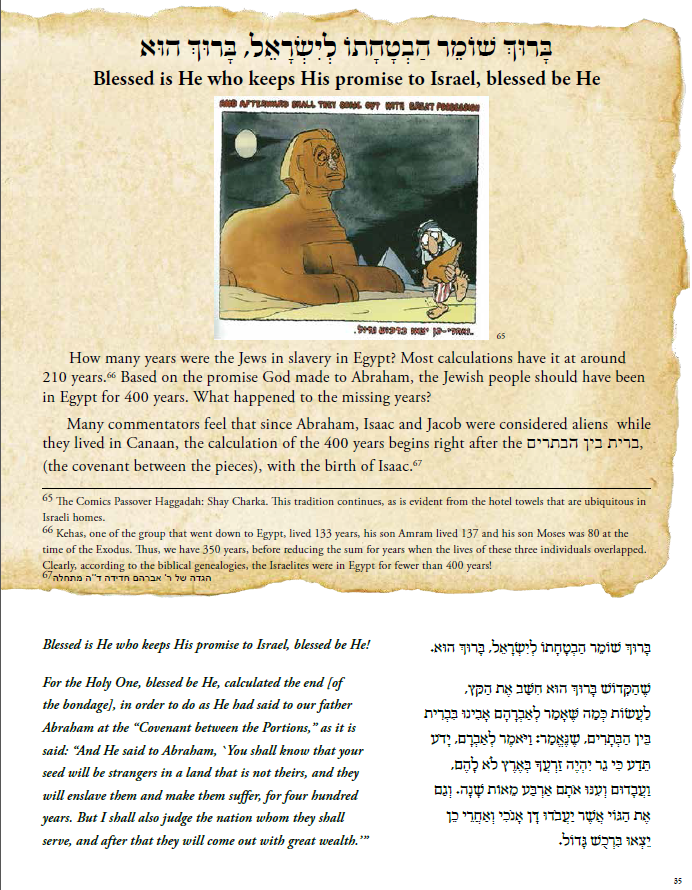Read part i here.
This is a presentation of Ibn Ezra's response to a commentator [perhaps Yitzchaki] who suggested switching more than one hundred words in Scriptures. Here, he considers and rejects a swap in parashat Yitro, based on a mismatch of הַגְבֵּל of the nation or the mountain.
Thus, Ibn Ezra continues with the second suggested swap:
"2) Shemot 19:12:
12 And thou shalt set bounds unto the people round about, saying: Take heed to yourselves, that ye go not up into the mount, or touch the border of it; whosoever toucheth the mount shall be surely put to death
vs. Shemot 19:23:
23 And Moses said unto the LORD: 'The people cannot come up to mount Sinai; for thou didst charge us, saying: Set bounds about the mount, and sanctify it.'
He said that it [the word in the latter verse] ought to be הָעָם.
And he did not say anything, for if one were to הַגְבֵּל the nation, then the גבול [boundary] would be around the mountain, and if one said to place [?] a boundary around the mountain, then there would be not difference between them."
End quote of Ibn Ezra.
In other words, since since the later verse is a rephrasing of God's command, and perhaps because הַגְבֵּל should be taken cause to form a perimeter, both should be the 'the nation'. Ibn Ezra's response is that one need not harmonize to use the same noun in the command and the restatement of the command, because with either word choice, this is a valid way of describing the action.
The Samaritans were also interested in such harmonizations, and they freely emended the text to make it smoother. In this instance, they similarly emended the text. Here is Vetus Testamentum, with the Masoretic text on the right and the Samaritan text on the left. A - means the Samaritan text is identical to the Hebrew, and a * means a corresponding letter or word is missing.
Their solution was to modify only verse 12 so as to make both instances, ההר, rather than העם. This introduces a problem, because of the word לֵאמֹר in pasuk 12. If Moshe were to וְהִגְבַּלְתָּ the nation, then there could be a לֵאמֹר as he instructs the nation. But the text will not flow if Moshe were to וְהִגְבַּלְתָּ the mountain. Therefore, the Samaritan scribe added an extra phrase, ואל העם תאמר, "and you should say to the nation".
This is a presentation of Ibn Ezra's response to a commentator [perhaps Yitzchaki] who suggested switching more than one hundred words in Scriptures. Here, he considers and rejects a swap in parashat Yitro, based on a mismatch of הַגְבֵּל of the nation or the mountain.
Thus, Ibn Ezra continues with the second suggested swap:
"2) Shemot 19:12:
יב וְהִגְבַּלְתָּ אֶת-הָעָם סָבִיב לֵאמֹר, הִשָּׁמְרוּ לָכֶם עֲלוֹת בָּהָר וּנְגֹעַ בְּקָצֵהוּ: כָּל-הַנֹּגֵעַ בָּהָר, מוֹת יוּמָת.
12 And thou shalt set bounds unto the people round about, saying: Take heed to yourselves, that ye go not up into the mount, or touch the border of it; whosoever toucheth the mount shall be surely put to death
vs. Shemot 19:23:
כג וַיֹּאמֶר מֹשֶׁה, אֶל-ה, לֹא-יוּכַל הָעָם, לַעֲלֹת אֶל-הַר סִינָי: כִּי-אַתָּה הַעֵדֹתָה בָּנוּ, לֵאמֹר, הַגְבֵּל אֶת-הָהָר, וְקִדַּשְׁתּוֹ.
23 And Moses said unto the LORD: 'The people cannot come up to mount Sinai; for thou didst charge us, saying: Set bounds about the mount, and sanctify it.'
He said that it [the word in the latter verse] ought to be הָעָם.
And he did not say anything, for if one were to הַגְבֵּל the nation, then the גבול [boundary] would be around the mountain, and if one said to place [?] a boundary around the mountain, then there would be not difference between them."
End quote of Ibn Ezra.
In other words, since since the later verse is a rephrasing of God's command, and perhaps because הַגְבֵּל should be taken cause to form a perimeter, both should be the 'the nation'. Ibn Ezra's response is that one need not harmonize to use the same noun in the command and the restatement of the command, because with either word choice, this is a valid way of describing the action.
The Samaritans were also interested in such harmonizations, and they freely emended the text to make it smoother. In this instance, they similarly emended the text. Here is Vetus Testamentum, with the Masoretic text on the right and the Samaritan text on the left. A - means the Samaritan text is identical to the Hebrew, and a * means a corresponding letter or word is missing.
Their solution was to modify only verse 12 so as to make both instances, ההר, rather than העם. This introduces a problem, because of the word לֵאמֹר in pasuk 12. If Moshe were to וְהִגְבַּלְתָּ the nation, then there could be a לֵאמֹר as he instructs the nation. But the text will not flow if Moshe were to וְהִגְבַּלְתָּ the mountain. Therefore, the Samaritan scribe added an extra phrase, ואל העם תאמר, "and you should say to the nation".
Update: Also see Ibn Ezra on the pasuk:
[יט, יב]
והגבלת -שים גבול בהר. ע"כ כמוהו הגבל את ההר וקדשתו לשום גבול בהר. והארכתי כל כך בעבור שאמר המשוגע שהפך בספרו דברי אלוהים חיים, אמר: כי רצה משה לומ: הגבל את העם. ויצא מפיו ההר במקום העם.
והגבלת -שים גבול בהר. ע"כ כמוהו הגבל את ההר וקדשתו לשום גבול בהר. והארכתי כל כך בעבור שאמר המשוגע שהפך בספרו דברי אלוהים חיים, אמר: כי רצה משה לומ: הגבל את העם. ויצא מפיו ההר במקום העם.




















